.31" rain fell yesterday in St. Cloud.
80 F. high temperature on Tuesday.
69 F. average high on May 16.
63 F. high on May 16, 2016.
May 17, 1915: Old man winter's last hurrah dumps 5 inches of snow along the western shore of Lake Superior.
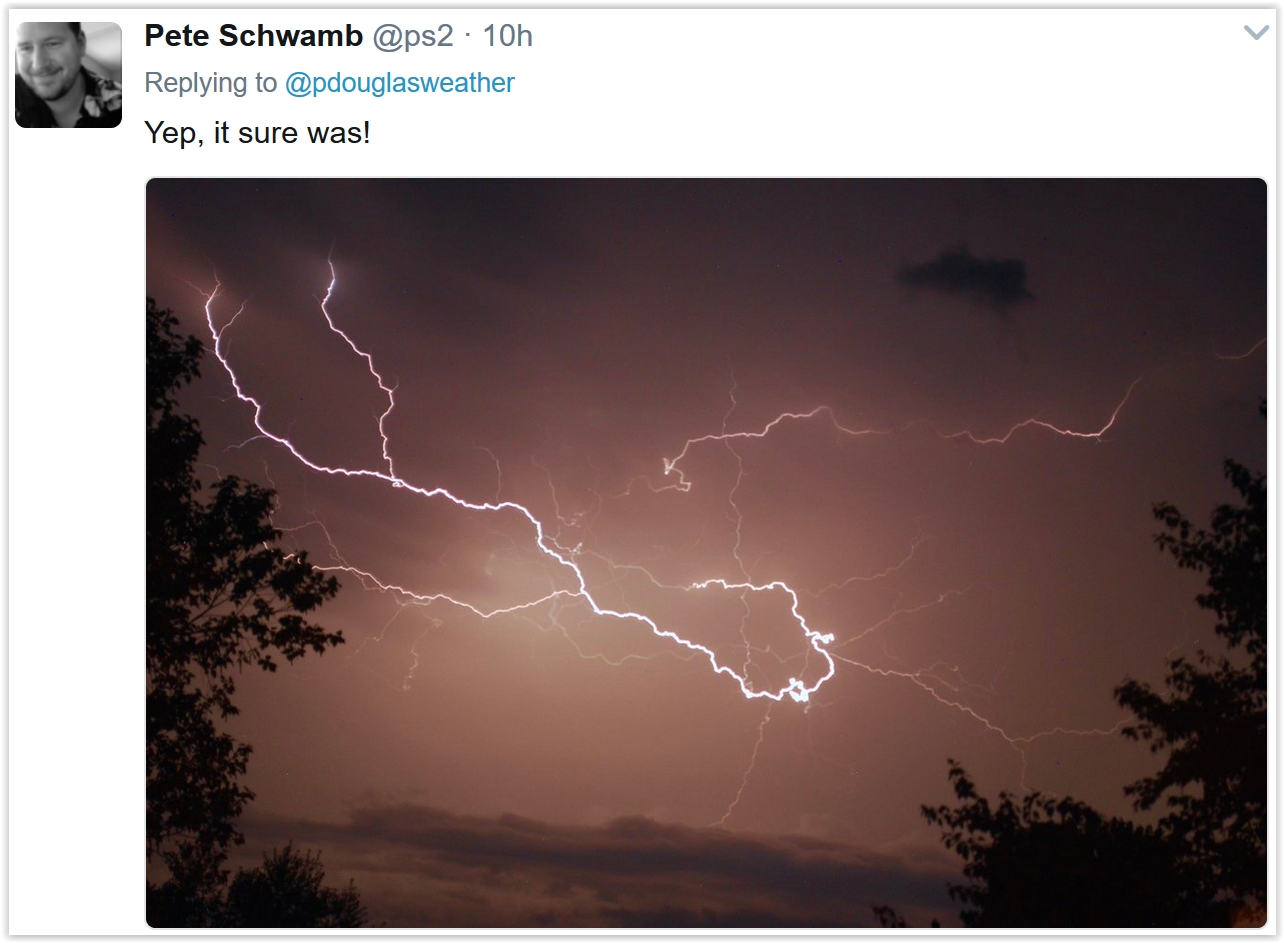 Beware of Electrical "Bolts From The Blue"
Beware of Electrical "Bolts From The Blue""Thunder is good, thunder is impressive; but it is lightning that does the work" mused Mark Twain.
In
my quest to know any (future) grand kids I have a healthy respect for
lightning. The first growl of thunder I duck into a building or vehicle.
38 Americans were killed by lightning in 2016, almost all these deaths
ultimately preventable.
I've run into coaches who don't move kids
to safety until they can "see the lightning". Which is just asking for
trouble. Because lightning can travel up to 10 miles, horizontally.
People have been struck and killed with blue sky directly overhead, a
distant thunderhead on the horizon. There's a reason why the expression
"bolt from the blue" exists.
A Conga-line of sloppy storms will
antagonize farmers and construction crews into the weekend. Surface
winds shift to the northeast today, lowering the risk of severe
thunderstorms. But more heavy rain is expected this afternoon - another
stormy surge on Saturday. Sunday may be salvageable, but don't get your
hopes up.
A/C will be optional, with highs in the 50s Thursday
into Saturday. A cool, showery bias lingers into next week. Yes, spring
MAY arrive any day.
"It's a Mess. Tornado Hits Trailer Park Near Chetek, Wisconsin. Here is a late night update from
Fox6 News in Milwaukee: "
A
tornado swept into a mobile home park near a small town in western
Wisconsin on Tuesday, killing one person and leaving around 25 injured,
as a storm system also pounded parts of at least seven states from Texas
to near the Canadian border with high winds and hail. Barron County
Sheriff Chris Fitzgerald told several media that the tornado damaged the
Prairie Lakes Estates trailer park north of Chetek. The National
Weather Service reported the tornado touched down in the area just after
5:30 p.m. Helicopter video from WCCO-TV and KARE-TV shows extensive
damage at the trailer park, with several homes reduced to rubble..."
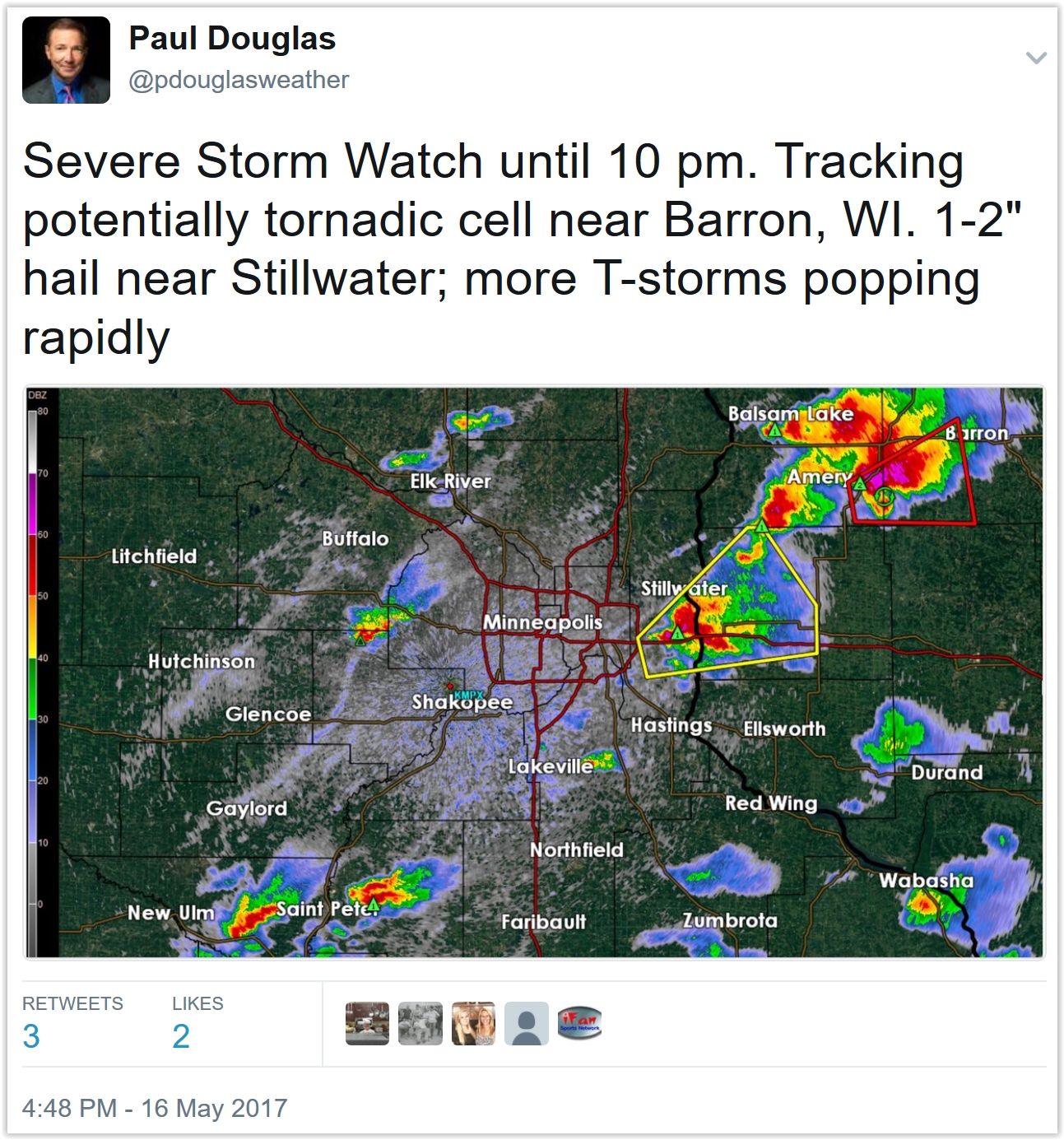 Classic Hook Echo.
Classic Hook Echo.
I issued the tweet above at 4:48 pm yesterday, when it was apparent
that a tornadic, supercell thunderstorm was pushing toward Barron. You
can see the cell, which looked like the number "6", in the upper right
of this image. A Tornado Warning was in effect at the time.
Overshooting Top Pinpoints Tornadic Updraft.
Of course wisdom is possible with 20/20 hindsight. Here is a late
afternoon visible satellite loop showing the supercell storm that went
on to spawn a deadly tornado near Chetek, Wisconsin. Look carefully and
you can see a knob on the top of the thunderhead anvil just east of the
Minnesota-Wisconsin border. That's evidence of an extreme updraft which
may correlate with the tornado that left dozens injured with at least
one confirmed fatality.
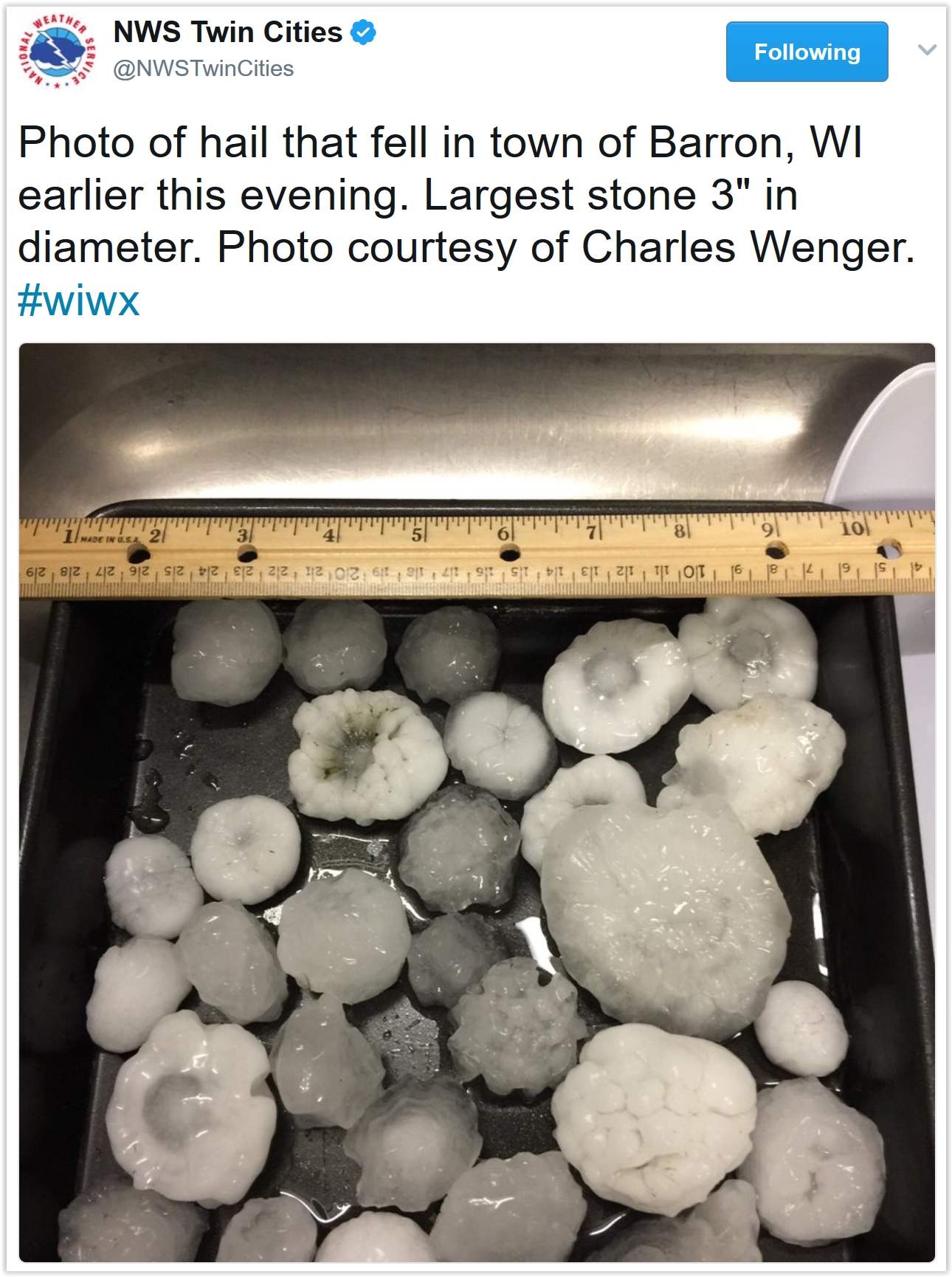
Wedge Tornado.
It's risky inferring tornado strength based on appearance, but there is
a rough correlation between width of a tornado funnel and the wind
speeds within the vortex. This appears to be 1/4 to 1/2 mile wide, which
would suggest a particularly severe tornado; EF-3 or stronger. Twin
Cities National Weather Service employees will assess the debris field
today before determining where this tornado ranks on the Enhanced Fujita
scale.

Serious Soaking.
NOAA's 12 KM NAM model prints out 2-4" rainfall amounts from near Omaha
and Sioux City to Albert Lea, the Twin Cities and Rhinelander over the
next 84 hours. Stating the obvious, more flash flooding is likely.
Animation: Tropicaltidbits.com.
Saturated.
May is a very wet month for many northern cities, but the sheer amount
of real estate expected to see 3-5" of rain over the next week is
breathtaking, stretching from Texas and Colorado to the U.P. of
Michigan. That's roughly 3-6 weeks worth of rain falling in less than 1
week.
Slow-Motion Pattern.
When weather systems slow or stall for days on end bad things can
transpire, especially floods. Today's storm winds up across the Central
Plains, pushing a pinwheel of heavy rain and T-storms across the Upper
Midwest. The East Coast enjoys a quiet Wednesday, while snow pushes from
Boise to near Cheyenne and even Denver.
April Relapse.
Yesterday felt like July 16; Thursday will feel like April 16. Makes
perfect sense. Unusually cool weather spills into the weekend, but 60s
may return next week. Twin Cities ECMWF data: WeatherBell.
U.S. Billion Dollar Weather and Climate Disasters 1980-2017.
Over a trillion dollars in weather and climate-related disasters since
1980. So far we've seen 5 confirmed billion dollar events, but I suspect
Missouri/Arkansas flooding and the recent Denver hailstorm will also
qualify as billion dollar disasters, bringing the subtotal up to 7 so
far this year. All of 2016 brought 15 separate billion dollar weather
and climate disasters to the United States. Details from
NOAA NCEI: "
The
U.S. has sustained 2018 weather and climate disasters since 1980 in
which overall damages/costs reached or exceeded $1 billion. Values in
parentheses represent the 2017 Consumer Price Index (CPI cost adjusted
value (if different than original value). The total cost of these 208
events exceed $1.1 trillion."
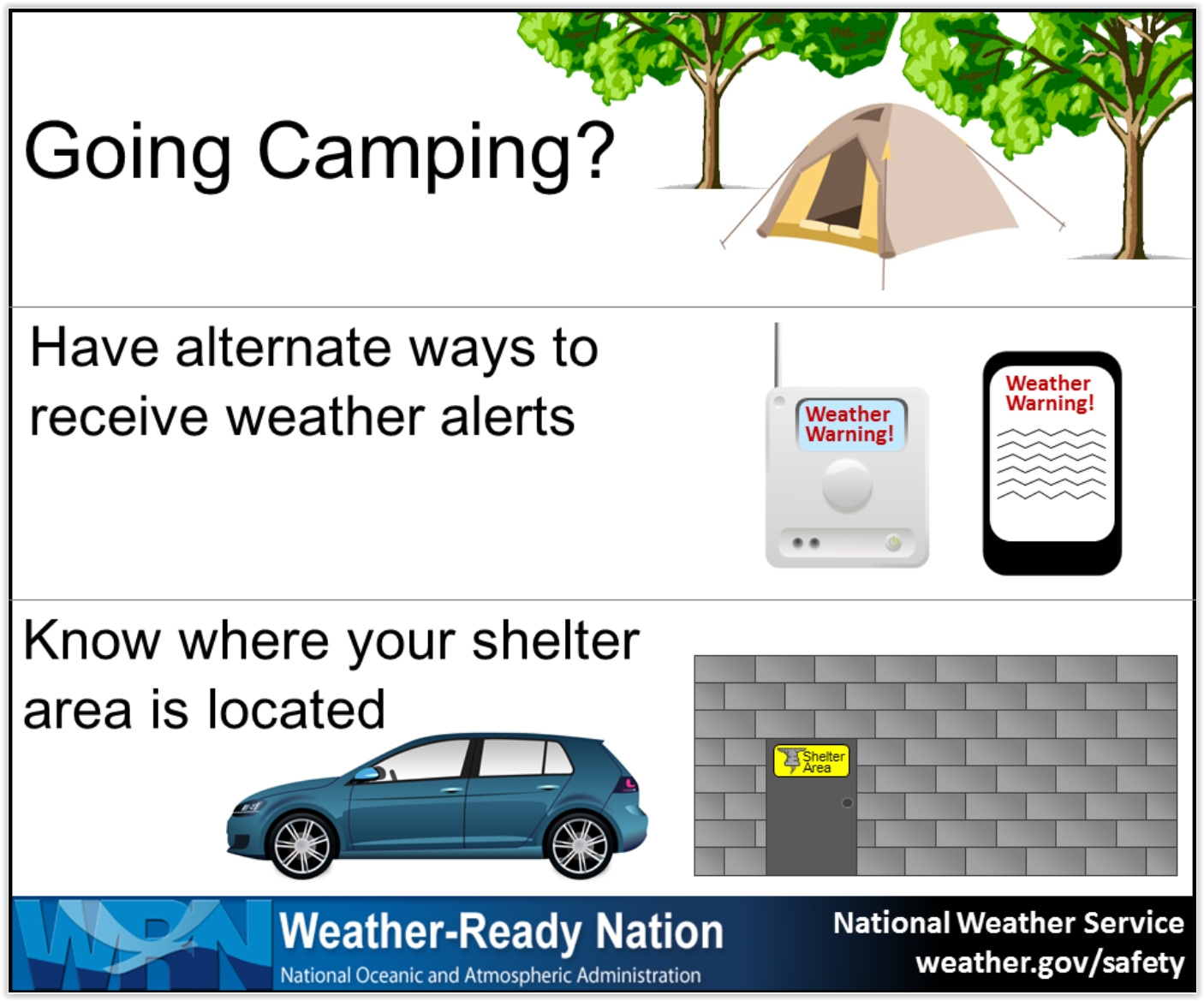
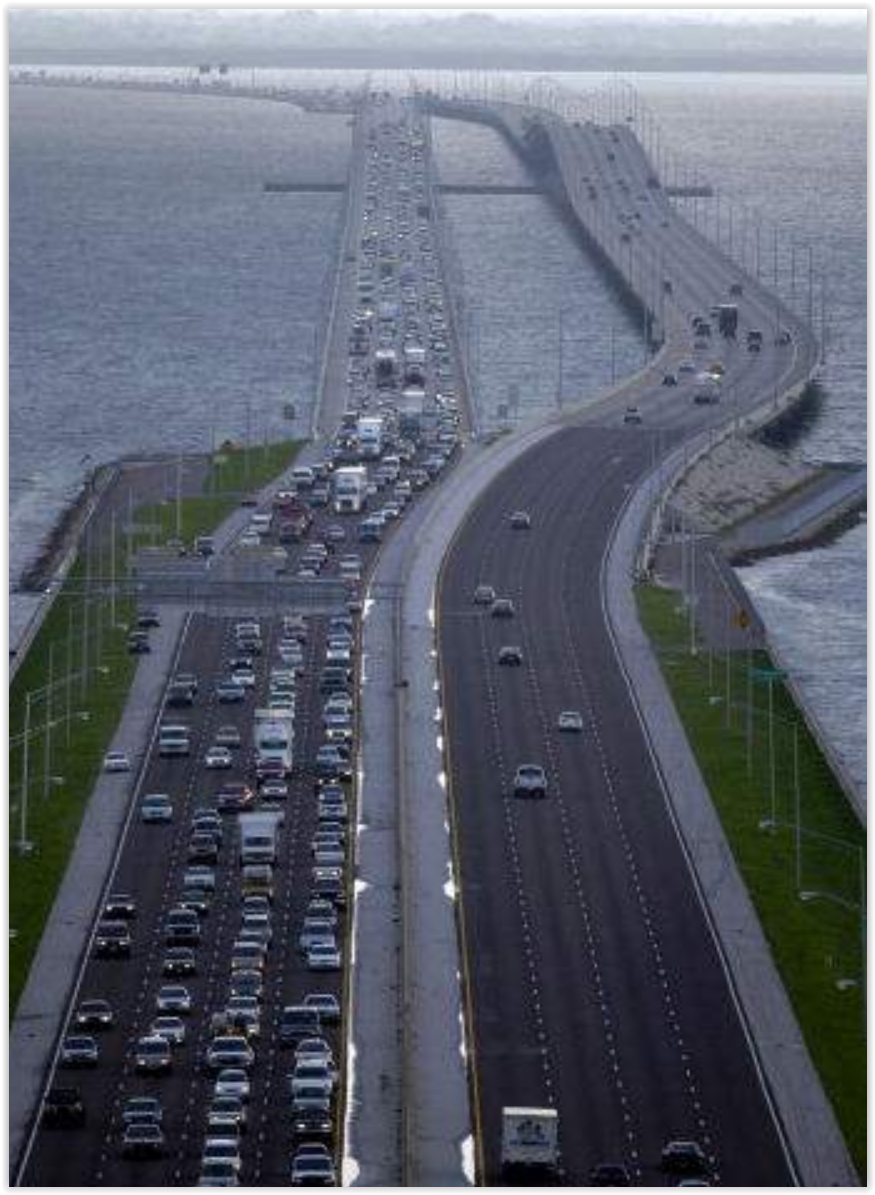 Just Imagine: 1.5 Million in Evacuation Gridlock as a Hurricane Aims at Tampa Bay.
Just Imagine: 1.5 Million in Evacuation Gridlock as a Hurricane Aims at Tampa Bay.
The west coast of Florida has been (supernaturally) lucky in recent
decades. Pondering a worst-case scenario for the Tampa area gives
emergency planners the chills, explains
TBO.com: "...
Nearly
every scenario seems nightmarish: In Pinellas County, a Level D
evacuation gives 585,000 people — half the county's population — 36
hours to crawl across the Courtney Campbell Causeway, Howard Frankland
and Gandy bridges. In Pasco County, a Level B evacuation means nearly
175,000 people would have 24 hours to flee east along just two roads,
State Roads 52 and 54. And if a monster hurricane takes aim at the bay
area, the highest evacuation level in Hillsborough, Pasco, Pinellas and
Manatee counties would result in a total of 1.5 million — half the
region — ordered to leave their homes over two full days. The Tampa Bay
area has a booming population but a busted road network. Emergency
management officials wonder how a region that can't handle rush-hour
traffic will deal with the realities of a major hurricane evacuation.
The bay area hasn't had a direct hurricane strike in nearly a century
and hasn't had a major evacuation in more than a decade..."
Photo credit: "
Vehicles
pack the northbound lanes of the Howard Frankland Bridge heading toward
Tampa during the evacuation for powerful Hurricane Charley on Aug. 12,
2004." Times (2004)
National Drought Recedes to Record Low Level. NOAA has the details: “
April
showers bring May flowers,” or so the saying goes. Perhaps a more
appropriate description this year might be, “Heavy April showers bring
record flooding.” All that rain helped shrink the drought footprint for
the contiguous U.S. to the lowest level since the nationwide Drought
Monitor program began in 2000. It also caused loss of life and extensive
property destruction in many communities. Last month, the average
contiguous U.S. temperature was 53.8 degrees F, 2.7 degrees above the
20th-century average. The month ranked as the 11th warmest April in the
123-year period of record, according to scientists from NOAA’s National
Centers for Environmental Information..."
U.S.Drought Monitor courtesy of The National Drought Mitigation Center, University of Nebraska at Lincoln.
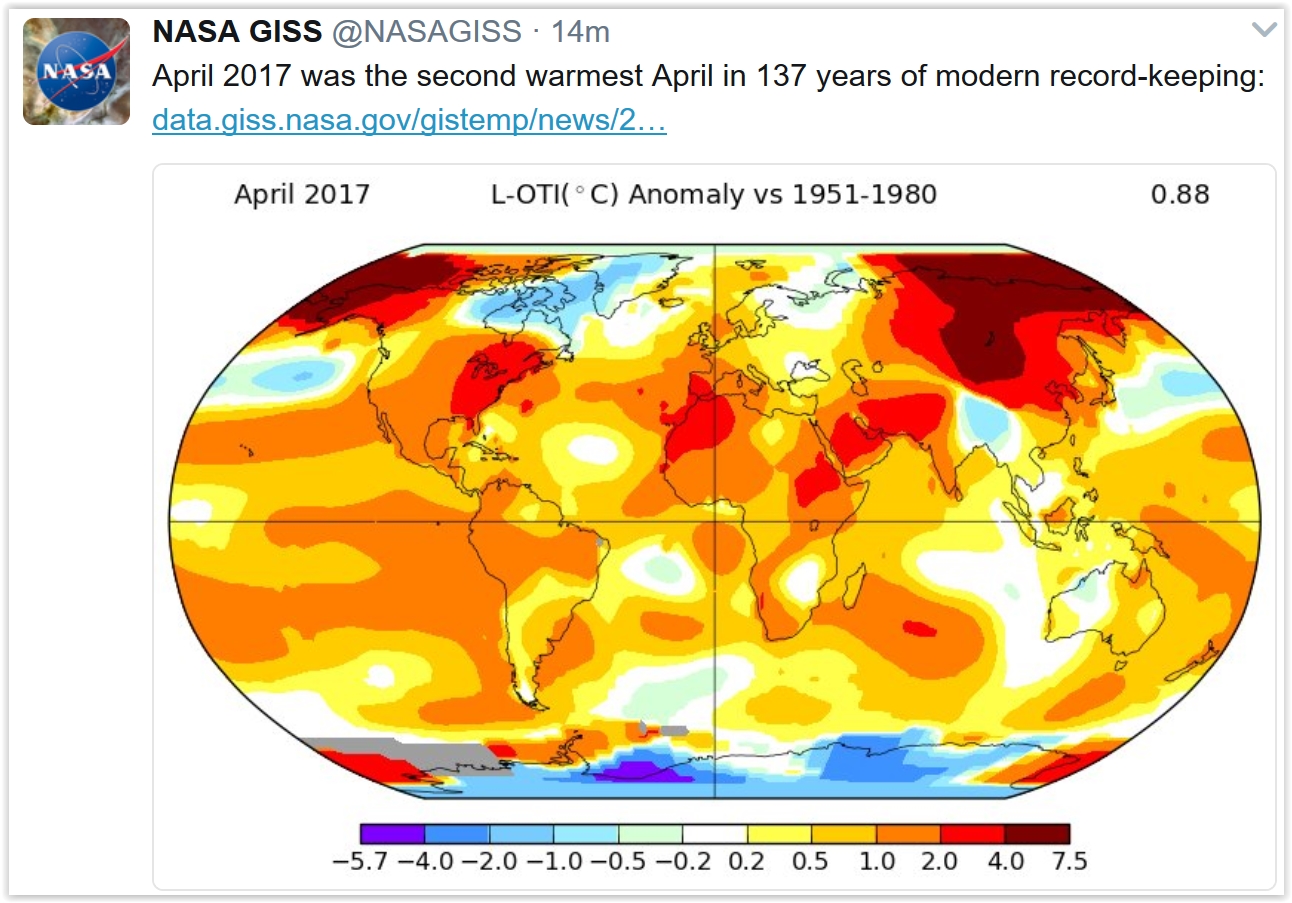
April 27 Was Second Warmest on Record, Worldwide.
NASA GISS has the details: "
April
2017 was the second warmest April in 137 years of modern
record-keeping, according to a monthly analysis of global temperatures
by scientists at NASA's Goddard Institute for Space Studies (GISS) in
New York. Last month was 0.88 degrees Celsius warmer than the mean April
temperature from 1951-1980. The two top April temperature anomalies
have occurred during the past two years. April 2016 was the hottest on
record, at 1.06 degrees Celsius warmer than the April mean temperature.
April 2017's temperature was 0.18 degrees Celsius cooler than April
2016. This past April was only slightly warmer than the third warmest
April, which occurred in 2010 and was 0.87 degrees warmer than the mean..."
 Farmers Scramble to Adapt to Volatile Weather. The Wall Street Journal
Farmers Scramble to Adapt to Volatile Weather. The Wall Street Journal reports: "
U.S.
farmers are putting aside politics and arming themselves for volatile
weather that they expect will be the new normal. Intense heat waves,
droughts and floods have led to erratic yields in California, Michigan,
Illinois, Georgia, South Carolina, Florida and other agricultural
states. Expecting that trend to continue, farmers big and small are
investing in ways to preserve water in their soil, plant crops more
quickly and irrigate more efficiently. “We are watching springs dry up,”
says Pat O’Toole, a Savery, Wyo., rancher, who uses portable,
solar-powered pumps to retrieve groundwater for his 6,000 sheep and
1,000 cows. “We are aggressively looking at our whole operation.” The
year 2012, with its record-setting heat wave and drought, was a turning
point for many. Growers in 22 states suffered what federal agencies
considered “crop failure,” the worst agricultural calamity since a
severe dry spell in 1988..." (File photo: Rob Koch).
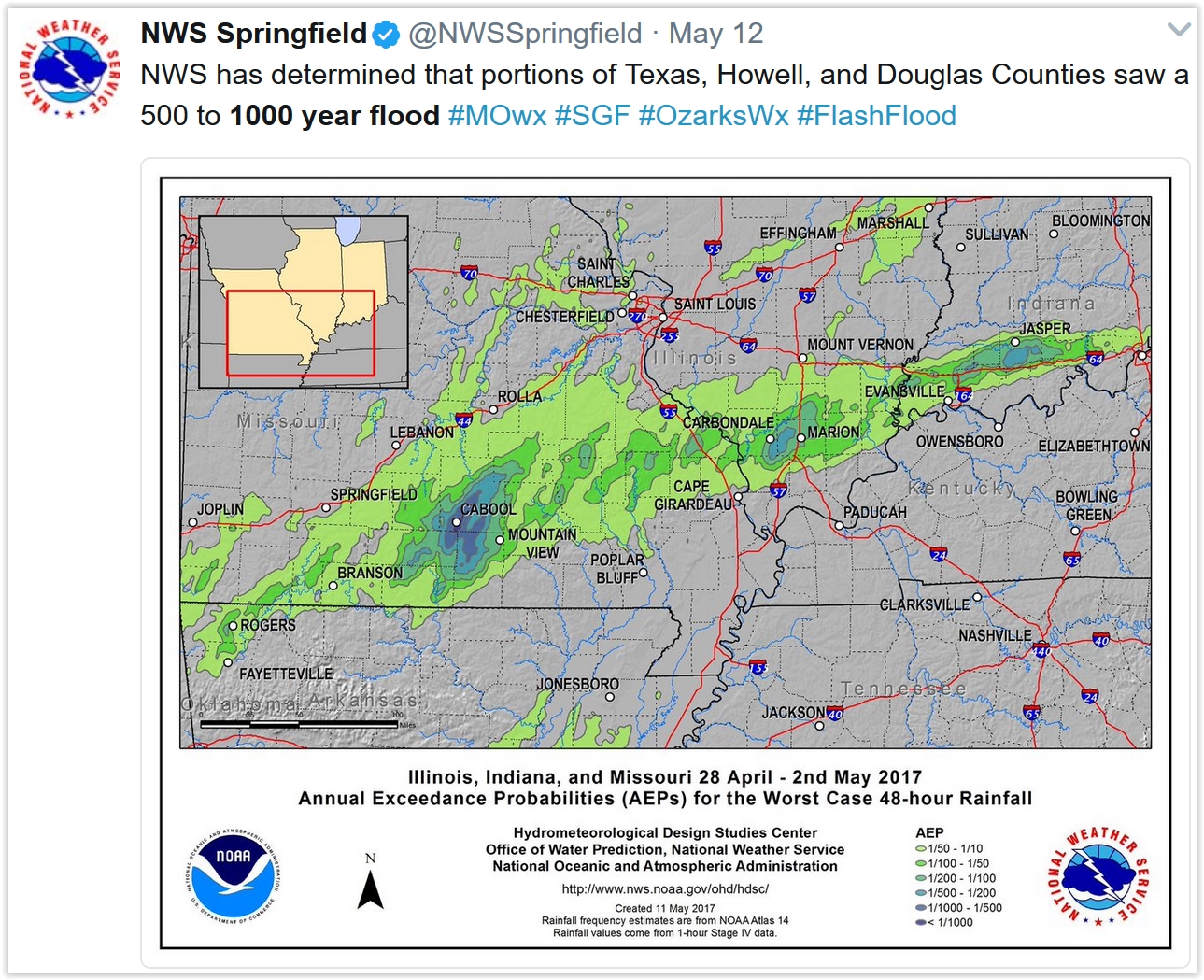 1 in 1,000 Year Rainfall Caused Missouri Floods.
1 in 1,000 Year Rainfall Caused Missouri Floods.
By my count the USA experienced at least 5 separate thousand-year rains
in 2016, a number that may be topped this year. Here's an excerpt from
USA TODAY: "
The
massive amount of rain that caused the devastating flooding in the past
few weeks in Missouri was a rare 1-in-1,000-year event, meteorologists
said Friday. Most of the “once-in-a-millennium” rainfall from late April
to early May occurred in Texas and Howell counties in southern
Missouri, the National Oceanic and Atmospheric Administration said. Some
areas picked up over a foot of rain within a few hours April 29. "This
incredible rainfall resulted in widespread and historic flooding," the
National Weather Service in Springfield, Mo., said. "Numerous roads,
bridges and buildings were destroyed." Other portions of the state, as
well as parts of Illinois and Indiana, experienced less extreme
rainfall, on the order of 1-in-200 and 1-in-500-year levels..."
Kentucky Town Turning Devastation into Innovation. Some tornadoes have silver linings. Here's an excerpt from
Proud Green Building: "..
.Clark has been a part of the post-disaster recovery in West Liberty that was modeled after Greensburg.
"Destroyed by an EF-5 tornado, only three buildings remained after this
tornado and the community decided to build back a green sustainable
community. They got a wind farm, they had to build everything from
schools to government and homes in the community," Clark said.
Greensburg rebuilt its community with green building construction,
using 100 percent renewable energy and using wind farms to keep the
lights on. In West Liberty, that same goal was made part of its master
plan to a degree..."
Photo credit: WKYT-TV.
Estimating Wildfire Fire Risk With a New Tool.
NOAA NCEI explains how the new system works: "...
So, NCEI and the NASA DEVELOP National Program collaborated with the U.S. Army Corps of Engineers (link is external), the Bureau of Indian Affairs, and the South Dakota State Fire Meteorologist (link is external)
to create a Fire Risk Estimation or FIRE tool that automatically
processes satellite and weather station data—including temperature,
precipitation, relative humidity, and wind observations—into a single
measurement of fire potential. To create the FIRE tool, the team began
with a list of indicators used to assess wildfire risk and the
thresholds for each that would indicate higher risk. Provided by fire
managers in South Dakota, these initial indicators and thresholds were
based on meteorological conditions that accompanied several large,
complex wildfires in the past decade..."
The Great American Eclipse is 100 Days Away, and Scientists are Ready.
The Hartford Courant has a good overview: "
This
summer, darkness will fall across the face of America. Birds will stop
singing. Temperatures will drop. Stars will become visible in the
daytime sky. In about 100 days, a total solar eclipse will sweep across
the continental United States for the first time since 1918. Astronomers
are calling it the Great American Eclipse. For the amateur sky-watcher,
a total eclipse presents a rare opportunity to witness a cosmic hiccup
in our day-night cycle. For solar astronomers, however, the eclipse
offers something else: three minutes (give or take) to collect as much
data as possible about the sun’s usually hidden outer atmosphere.
Researchers have been anticipating the event for years..."
Photo credit: "
Williams
College astronomer Jay Pasachoff prepares for a solar eclipse in
Argentine Patagonia in February. He plans to observe this summer's total
eclipse from western Oregon." (Photo courtesy of Jay Pasachoff)
Germany Just Broke a Renewable Energy Record. Here's an excerpt from
indy100: "
The
future came early on Easter Day in Germany, as green energy ran almost
the entire country. On April 30, 64 per cent of electricity consumed in
Germany came from renewable sources, such as wind power and solar. At
2pm, the share of renewables was 85 per cent and between 10am and 6pm
over three quarters of demand was covered by clean energy - an
impressive feat in a world still dominated by coal and oil. German
think-tank Agora Energiewende shared the data of this momentous
achievement, remarking that this sort of situation will be "completely
normal" by 2030. Easter weekend in Germany also saw the the least amount
of coal the country has used “in recent history” and nuclear power
plants reduce their output by up to 40 per cent..."
Photo credit:
Inhabitat.com.
Gas-Powered Vehicles Will Vanish in 8 Years, Says US Report.
I'd be amazed if this happens, yet it's hard not to argue with the
trend toward electrification of the world's transportation
infrastructure. Then again, the future never turns out quite the way you
think it will. Here's an excerpt at The Telegraph and
Stuff.co.nz: "
No
more petrol or diesel cars, buses, or trucks will be sold anywhere in
the world within eight years. The entire market for land transport will
switch to electrification, leading to a collapse of oil prices and the
demise of the petroleum industry as we have known it for a century. This
is the futuristic forecast by Stanford University economist Tony Seba.
His report, with the deceptively bland title Rethinking Transportation
2020-2030, has gone viral in green circles and is causing spasms of
anxiety in the established industries. Prof Seba's premise is that
people will stop driving altogether. They will switch en masse to
self-drive electric vehicles (EVs) that are 10 times cheaper to run than
fossil-based cars, with a near-zero marginal cost of fuel and an
expected lifespan of 1m miles..."
Photo credit: "
Vehicles like the BMW i3 electric car are a future that is coming fast according to a report out the US."
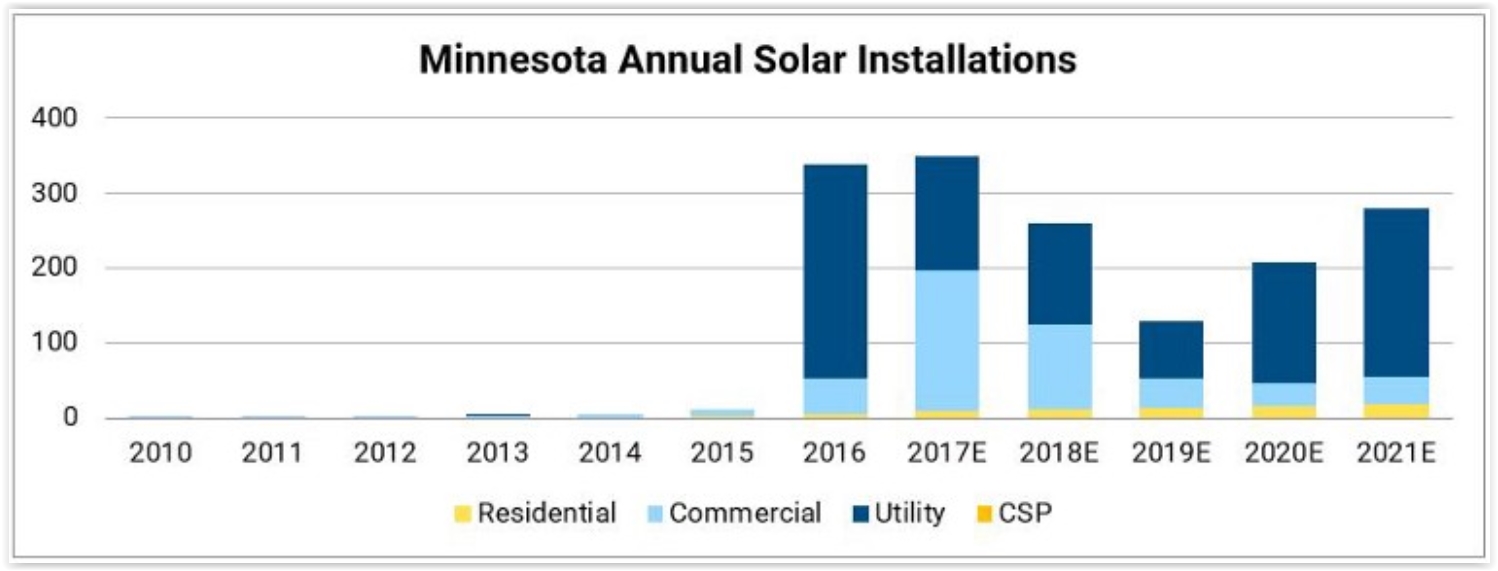
Minnesota's Governor Dayton Vetoes State Legislature's Attempt to Gut Renewables. Here's an excerpt at
ThinkProgress: "
Democratic
Gov. Mark Dayton has locked horns with Minnesota’s Republican-led
legislature over a set of budget bills that must pass before the session
ends next week, or the state risks a shut-down. On Monday, the governor
vetoed five omnibus bills
over concerns that the legislature is cutting too much, too
quickly — including a successful solar program. The energy and commerce
omnibus bill would have eliminated the state’s renewable development
fund — replacing it with an energy fund that could be used to fund a
broad range of projects — and would have eliminated the state’s Made in
Minnesota solar rebate program..."
Graphic credit: Solar Energy Industries Association.
Breakfast Was The Most Important Meal of the Day - Until America Ruined It. A fair criticism? Here's an excerpt from
The Washington Post: "...
All
the cereal, whole grain or not, is processed in a way to give it
indefinite shelf life. As the nutritious parts of our food are what goes
bad on the shelf, just about every processed-grain product on the shelf
is nutritionally barren. Sukol walked me through the basic physiology.
When sugar enters our bloodstream, the hormone insulin is released to
deliver the sugar to its proper destination. If more sugar comes in than
the insulin can transport, the sugar is stored as fat and the insulin
system is strained, which can result in diabetes and other diet-related
diseases..."
Image credit: "
Whatever happened to “a balanced breakfast?" (Washington Post illustration/iStockphoto.
Where Automation Poses the Biggest Threat to American Jobs. Here's an excerpt at
CityLab: "...
A
new analysis suggests that the places that are going to be hardest-hit
by automation in the coming decades are in fact outside of the Rust
Belt. It predicts that areas with high concentrations of jobs in food
preparation, office or administrative support, and/or sales will be most
affected—places such as Las Vegas and the Riverside-San Bernardino area
may be the most vulnerable to automation in upcoming years, with 65
percent of jobs in Las Vegas and 63 percent of jobs in Riverside
predicted to be automatable by 2025. Other areas especially vulnerable
to automation are El Paso, Orlando, and Louisville. Still, the authors
estimate that almost all large American metropolitan areas may lose more
than 55 percent of their current jobs because of automation in the next
two decades..."
Map credit:
The Atlantic, Institute for Spatial Economic Analysis, University of Redlands.
How Untreated Depression Contributes to the Opioid Epidemic. Interesting food for thought at
The Atlantic: "
It can sometimes seem strange how so much of the country got hooked on opioids within just a few years. Deaths from prescription drugs
like oxycodone, hydrocodone, and methadone have more than quadrupled
since 1999, according to the CDC. But pain doesn’t seem to be the only
culprit: About one-third
of Americans have chronic pain, but not all of them take prescription
painkillers for it. Of those who do take prescription opioids, not all
become addicted. Several researchers now believe depression, one of the
most common medical diagnoses in the U.S., might be one underlying cause
that’s driving some patients to seek out prescription opioids and to
use them improperly. People with depression show abnormalities
in the body’s release of its own, endogenous, opioid chemicals.
Depression tends to exacerbate pain—it makes chronic pain last longer
and hurts the recovery process after surgery..."
File photo:
Jonathan Ernst / Reuters.
Your Shoes Will Be Printed Shortly. 3-D printers will be capable of amazing things, as reported at
The Wall Street Journal: "
This
may be the year you get 3-D-printed shoes. By the end of 2017, the
transformation of manufacturing will hit a milestone: mass-produced
printed parts. Until now, that concept was an oxymoron, since 3-D
printing has been used mainly for prototyping and customized parts. But
the radical innovation of 3-D printing techniques means we are finally
going to see some previously impossible designs creep into our consumer
goods. In the long term, it also means new products that previously
would have been impractical to produce, and a geographical shift of some
manufacturing closer to customers..."
Photo credit: "
Adidas’s
Futurecraft 4D performance runnning shoes feature plastic midsoles
crafted using “digital light synthesis” 3-D printing technology
pioneered by Carbon Inc."
Virtual Reality Concerts Are Nearly a Reality. A cool concept, but something may be lost in translation. Here's a clip from 512tech in Austin: "It’s
likely that five years from now, attending concerts via virtual reality
will be a thing. It’s plausible that superstar artists booking
one-off live performances, and big ticket festivals — the Coachellas and
the Lollapaloozas of the world — will actually be able to convince web
users to pony up cash to take in the experience online. Virtually attending a performance by Austin psych-rock titans The Black Angels,
presented by LiveNation and NextVR, at First Avenue in Minneapolis this
weekend made it easy to see why industry execs are racing to develop VR
concerts. But the technology isn’t quite there yet. NextVR,
a company whose stated goal is to “get 7 billion people closer to the
events they love,” is developing content for the Google Daydream View
and the Samsung GearVR headsets..."
Do You Suffer from "Railway Madness"?
I'm fine on the rails, but get me on the interstate during rush hour
and I feel waves of forced-insanity washing over me. There has to be a
better way. Here's an excerpt from
Atlas Obscura: "...
As the railway grew more popular in the 1850s and 1860s, trains allowed travelers to move about with unprecedented speed and efficiency, cutting the length of travel time drastically.
But according to the more fearful Victorians, these technological
achievements came at the considerable cost of mental health. As Edwin
Fuller Torrey and Judy Miller wrote in The Invisible Plague: The Rise of
Mental Illness from 1750 to the Present, trains were believed to “injure the brain.”
In particular, the jarring motion of the train was alleged to unhinge
the mind and either drive sane people mad or trigger violent outbursts from a latent “lunatic.” Mixed with the noise of the train car, it could, it was believed, shatter nerves..."
Illustration credit: "
An illustration from the Illustrated Police News, Saturday 11 May 1889."
All Images: © The British Library Board. All rights reserved/ Courtesy The British Newspaper Archive
More Americans Are Naming Children After Star Wars Characters. And why not? Here's a clip from
Quartz: "
Last year we analyzed
the effect that the Star Wars franchise has had on the names of
American children. The number of Lukes, Leias, and even Darths rose
after the first film, A New Hope, came out in 1977. Now, with the latest
data from the Social Security Administration (SSA) on baby naming in
2016, can we say the same about The Force Awakens, the 2015 film that
continued Star Wars’ main storyline? We’ll let this chart speak for
itself..."
TODAY: Showers and T-storms likely, cooler. Heavy rain likely Winds: NE 8-13. High: 69
WEDNESDAY NIGHT: More rain, heavy at times. Low: 51
THURSDAY: Showers taper early, clouds linger - cool breeze. Winds: NE 10-20. High: 57
FRIDAY: Dry start, another round of showers. Winds: NE 10-15. Wake-up: 44. High: 56
SATURDAY: More rain, potentially heavy. Winds: NE 10-20. Wake-up: 46. High: 57
SUNDAY: Damp start, then sunny peeks. Better. Winds: NW 10-15. Wake-up: 47. High: 59
MONDAY: Sunny start, few PM pop-up showers. Winds: W 10-15. Wake-up: 46. High: 67
TUESDAY: Still cool, few instability showers. Winds: NW 10-15. Wake-up: 48. high: 63
Climate Stories...
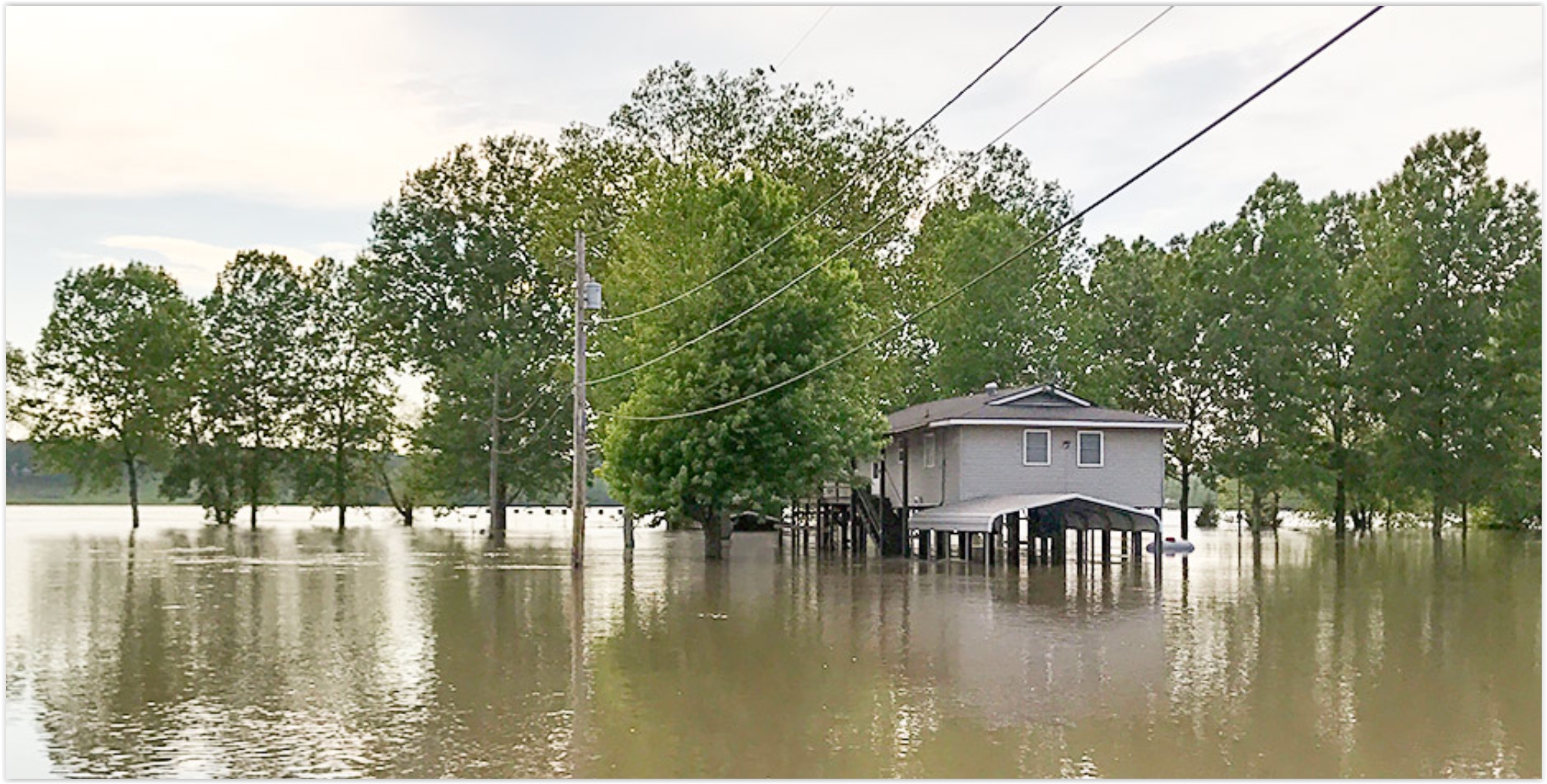 Trump Country is Flooding, and Climate Ideas Are Shifting. E&ENews
Trump Country is Flooding, and Climate Ideas Are Shifting. E&ENews
has an eye-opening article focused on changes being witnessed in the
Mississippi River Valley: "...The politics of climate change make it
challenging for mayors south of St. Louis to discuss it openly, said
Colin Wellenkamp, executive director of the Mississippi River Cities and
Towns Initiative. They talk about disaster mitigation or disaster
resilience — often code words for how they're responding to climate
change without saying the words. Counts and other mayors understand that
disasters are on the rise, though. Counts laughs when Wellenkamp is
asked whether there's such a thing as a 100-year flood anymore.
Wellenkamp trots out familiar statistics:
Since 2011, the
10-state Mississippi River corridor has seen $50 billion in natural
disaster impacts, including a 100-year flood, a 200-year flood, a
500-year flood, a 50-year drought and two hurricanes. The 75
cities in his network are learning how to live with the river,
Wellenkamp said, "not make the river live with us." "Our focus has been:
How do we really increase the number of solutions that are on the
table?" he said. "And how many of those solutions can work in the long
term?..."
Image credit: "
A flooded home on stilts near Thebes, Ill."
Photo by Erika Bolstad.
Data Drive to Help Farmers Cope With Climate Change Via Their Smartphones. Reuters explains: "As
smartphones spread to rural areas, an initiative backed by tech giants
aims to help small farmers in poor countries access data on crops,
weather and soil, helping them boost production in the face of climate
change, a farming group said on Monday.
Global agricultural research organization CGIAR said it joined forces
with tech firms including IBM and Amazon to analyze vast amounts of
agricultural data and advise farmers on the best production methods for
them. "It's time for smallholder farmers
to stop looking at the sky and praying for rain," said Andy Jarvis, a
research director at the International Center for Tropical Agriculture
(CIAT), which is part of CGIAR. "With enough data and enough analysts we'll be able to say if the rains will be late or on-time," he said in a statement..."
Climate Change: Extreme Rainfall Will Vary Between Regions. Here's an excerpt of a story summarizing new research at ScienceDaily: "A
new study by researchers from MIT and the Swiss Federal Institute of
Technology in Zurich shows that the most extreme rain events in most
regions of the world will increase in intensity by 3 to 15 percent,
depending on region, for every degree Celsius that the planet warms. If
global average temperatures rise by 4 degrees Celsius over the next
hundred years, as many climate models predict given relatively high CO2
emissions, much of North America and Europe would experience increases
in the intensity of extreme rainfall of roughly 25 percent. Some places
such as parts of the Asian monsoon region would experience greater
increases, while there will be smaller increases in the Mediterranean,
South Africa and Australia..."
 Managing Risk in a Changing Climate. WPSU-TV at Penn State has a description and link to the documentary: "Climate
change poses real threats that call for tough choices under deep
uncertainty. Louisiana has been called “the canary in the coal mine” for
climate impacts as it reports rates of relative sea level rise among
the highest in the world as more and more land disappears into the Gulf
of Mexico. The public television documentary Managing Risk in a Changing
Climate examines how Louisiana decision makers engage with researchers
and stakeholders to inform choices about how to manage risks driven by
changing sea levels and storms. Featuring some of the nation’s leading
climate experts and narrated by Peter Coyote, Managing Risk in a
Changing Climate examines one of humanity’s most pressing challenges
through the lens of the many academic disciplines needed to address the
impacts and surrounding economic, social, and environmental issues that
come with managing risk in a changing climate
Managing Risk in a Changing Climate. WPSU-TV at Penn State has a description and link to the documentary: "Climate
change poses real threats that call for tough choices under deep
uncertainty. Louisiana has been called “the canary in the coal mine” for
climate impacts as it reports rates of relative sea level rise among
the highest in the world as more and more land disappears into the Gulf
of Mexico. The public television documentary Managing Risk in a Changing
Climate examines how Louisiana decision makers engage with researchers
and stakeholders to inform choices about how to manage risks driven by
changing sea levels and storms. Featuring some of the nation’s leading
climate experts and narrated by Peter Coyote, Managing Risk in a
Changing Climate examines one of humanity’s most pressing challenges
through the lens of the many academic disciplines needed to address the
impacts and surrounding economic, social, and environmental issues that
come with managing risk in a changing climate..."
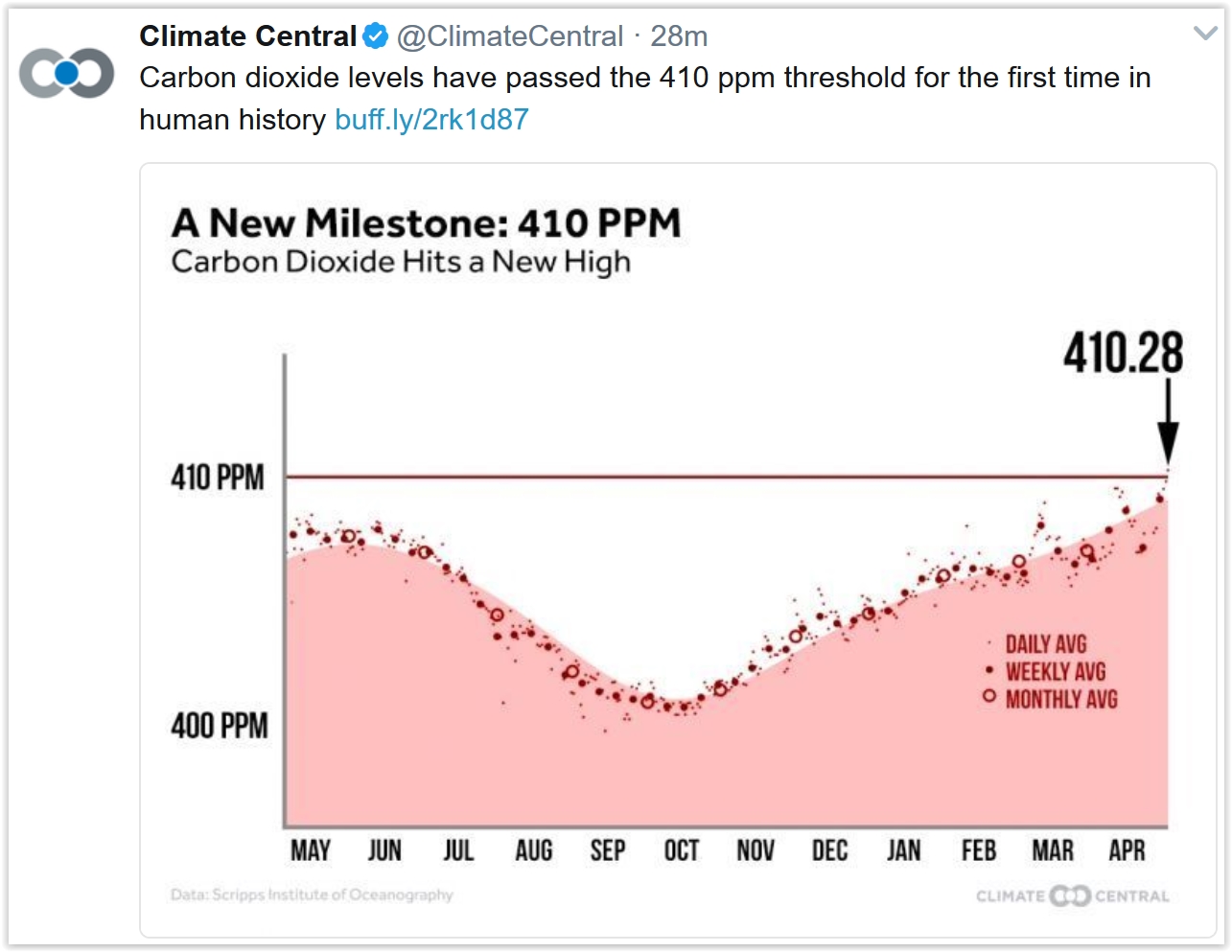
Land Use and Climate Change Could Increase Flood Frequency, Experts Say. In light of recent severe flooding across Quebec
CBC News in Canada provides perspective: "...
An
increasing body of scientific evidence shows that human-driven climate
change is leading to more frequent severe weather events — including snowfall. Warmer air can hold more moisture, Schreier said, which leads to more precipitation. But that's not the whole story. In a 2012 paper,
Kevin Trenberth — a climate scientist at the National Center for
Atmospheric Research in Colorado — found that, as average temperatures
rise, we should expect to see record levels of precipitation more often.
As well, a 2017 study lead by Michael Mann of the Earth System Science
Center at Penn State University found that human activity is altering
the behaviour of the jet stream — a sort of atmospheric conveyor belt
that moves heat and moisture around the northern hemisphere — in a way that is causing storm systems to stall more often. These stalled systems result in longer bouts of extreme weather, both wet and dry..."
Photo credit: "
A
growing body of scientific research suggests extreme flooding like that
seen in Kelowna this month will become a lot more common in the future." (Manjula Dufresne/CBC).
Rising Conservative Voices Call for Climate Change Action. Here's an excerpt of an interview at
PBS NewsHour: "...
SEN. SHELDON WHITEHOUSE:
Virtually every Republican who has looked at the climate change problem
and come to a solution comes to the same solution, which is a price on
carbon, a market signal that is revenue-neutral and gives all the money
back to the public. And I think our answer is, ‘Yes, yes, we’ll do
that.’ So, we agree on the getaway car, we agree on the need for escape,
and really the last political problem is how you get Republicans
through that kill zone that the fossil fuel industry has set up in
Congress.
STEPHANIE SY: The fossil fuel
industry has actually come out in favor of some sort of carbon pricing.
Do you view them as genuine allies on climate action?
SEN. SHELDON WHITEHOUSE:
No. Every part of the fossil fuel industry’s and Big Oil’s political
apparatus is still lined up to say, ‘If you dare talk about a carbon
price, we are coming after you..."
Image credit: "
Climate
change is one of many issues seen as dividing Democrats and
Republicans. A dominant wing of the GOP has denied climate change
exists, as some Democrats have tried to reduce air pollution and push
for alternative forms of energy. But meanwhile, some Republicans are
also pushing for climate action." NewsHour Weekend Special Correspondent Stephanie Sy reports.
Under Fire, Climate Scientists Unite with Lawyers to Fight Back.
The New York Times reports.
It's All About Solutions.
J. Drake Hamilton of Fresh Energy will give a presentation on
"Minnesota's Clean Energy Solutions to Climate Change" at the Maple
Grove Library (8001 Main St, Maple Grove) on Thursday, May 25th at
7:00PM.
Mom Aims to Protect her Children and the Planet.
Does your son or daughter have asthma? A warmer, wetter atmosphere will
probably aggravate their symptoms as time goes on. Here's what one
concerned mom did to make a difference, courtesy of
Yale Climate Connections: "...
A
warmer climate is expected to cause more days with poor air quality.
And ragweed season will likely get longer – triggering more asthma
attacks. Becker’s own asthma raised a red flag … increasing her concern
about her kids’ future. Becker: “I want them to inherit a planet that
people are actually conscientious about what they’re doing, how much
energy they’re using, where is the energy coming from, what type of
impact are they having on the planet for future generations.” So Becker
got involved. As part of the Moms Clean Air Force, she communicates her
concerns to elected officials – encouraging them to follow the old
advice, and listen to our mothers."
Treat Climate Change Symptoms and Don't Worry About the Cause.
But unless we address the cause (addiction to fossil fuels,
deforestation, etc) we'll never be able to lower the gases that are
warming the planet, right? Semantics? Let's just call it "endless
summer". Here's an excerpt of an Op-Ed at
USA TODAY: "...
A
policy that focuses on the impact of rising sea levels,
building infrastructure that is needed regardless of its cause, and can
be financed conservatively — that is a compromise everyone should be
able to live with. Republicans don’t have to accept that global warming
is real as long as they don’t deny that sea levels are rising. And
Democrats get actions to deal with the consequences of climate change,
even if the causes are inadequately addressed. If we are very lucky, the
rapid transition to solar energy may reduce carbon emissions enough to
stabilize global temperatures without onerous taxes or regulations that
are, in any event, politically impossible at the moment. Addressing
symptoms while sidestepping causes will not satisfy the Al Gores of the
world. But it might get us moving on concrete actions to deal with the
consequences of global warming. We will need them no matter what."
Drawdown.
Paul Hawken has written and edited a book focused on solutions,
concrete steps required to reduce greenhouse gas emissions without
upsetting the global economy. It's a
worthy read. Here's an excerpt: "
Drawdown
maps, measures, models, and describes the 100 most substantive
solutions to global warming. For each solution, we describe its history,
the carbon impact it provides, the relative cost and savings, the path
to adoption, and how it works. The goal of the research that informs
Drawdown is to determine if we can reverse the buildup of atmospheric
carbon within thirty years. All solutions modeled are already in place,
well understood, analyzed based on peer-reviewed science, and are
expanding around the world..."
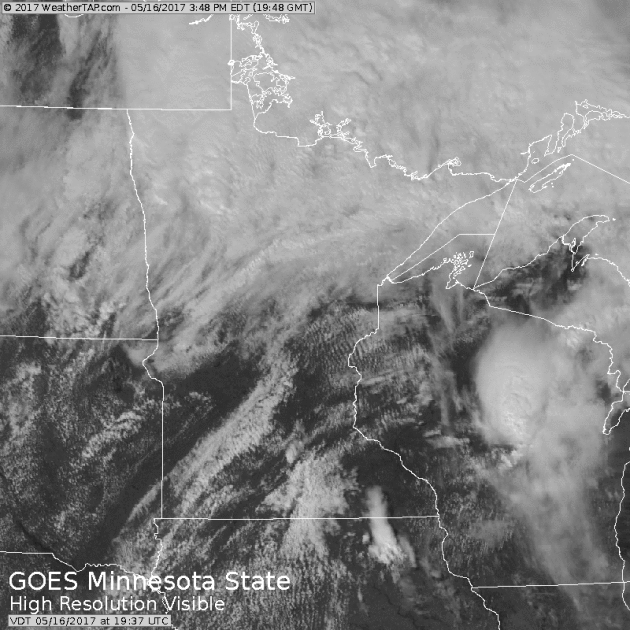
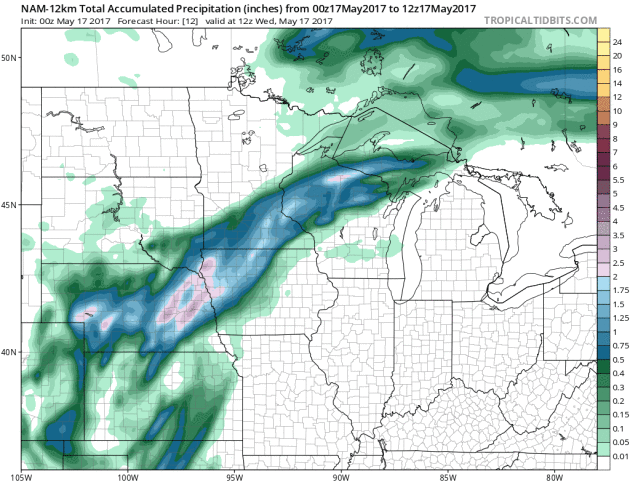
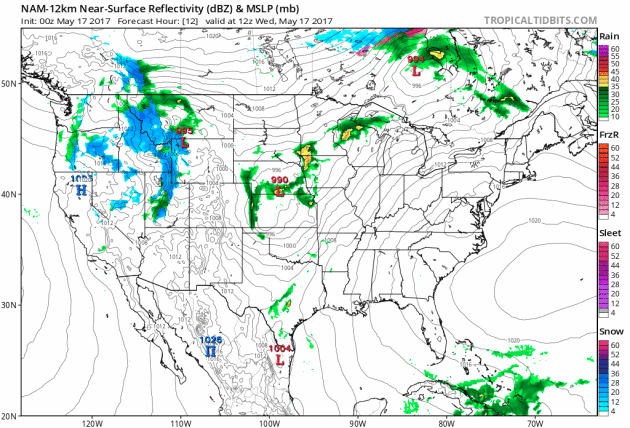
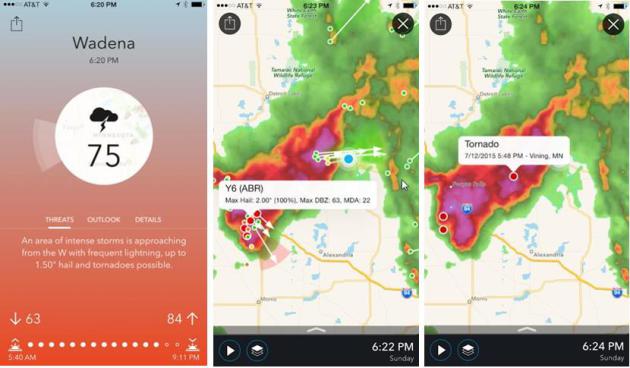
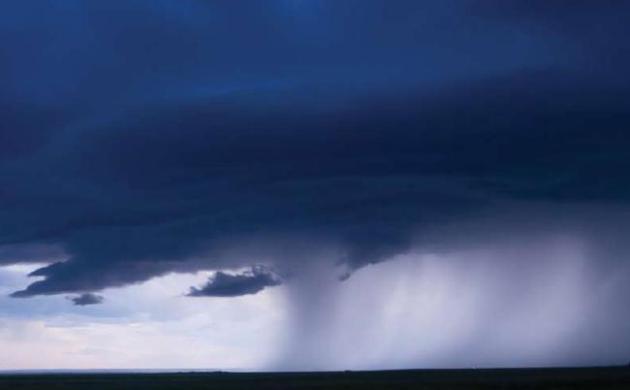
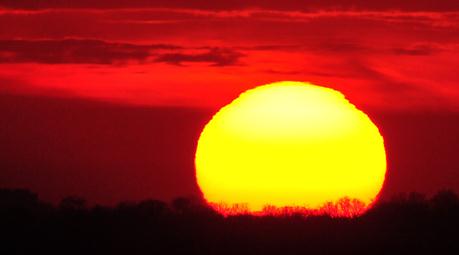
No comments:
Post a Comment